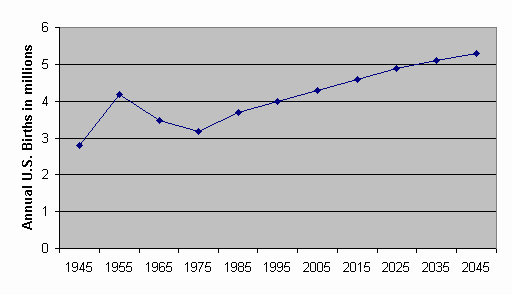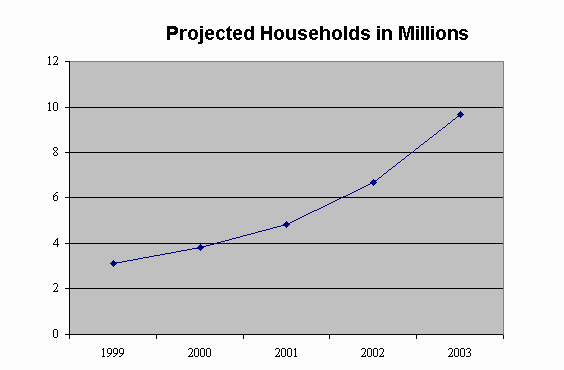
|
|
|
|
From "High tech means big pay for Arizona workers" "High technology accounts for more than half of all the state's manufacturing jobs. Those high tech jobs have an average wage of $46,700. The average wage paid in 1996 by the six large technology firms was $52,167. The average wage across Arizona was $26,100 that year. The goods and services purchased by high-tech companies from other Arizona firms and the money spend by employees throughout the state - produced a total economic impact of $32.7 billion. By comparison, copper production in 1996 was valued at $2.9 billion, and agriculture in Arizona was worth $2.3 billion. 1. What percent more do high tech jobs pay than the average wage across Arizona? 2. What percent more is the average wage for he big six high tech companies than the average wage across Arizona? 3. How does the high tech economic impact compare with that of copper and agriculture? Calculate your answer.
From "High tech companies desperate for engineer, programmers": So acute is the shortage of electrical engineers, programmers and technical support staff that companies will do just about anything to get them. About 190,000 high tech jobs no sit vacant. The crisis begins to look more severe when you consider that during the years 1986 to 1994, the number of college degrees in computer science dropped from 42,195 to 24,200. Companies are finding themselves forced to turn down work, table innovative projects and set up shop offshore. Other countries have seen the opportunities and seized them. India, for example, had 25,000 programmers in the mid-1980's. Now that number is estimated at somewhere between 250,000 and 300,000. 1. What was the percent decrease in U.S. college degrees in computer science? 2. What was the percent increase of computer programmers in India?
From "Death is price too often paid pursuing new forest economy": "The van dropped them off just after dawn, and the brush pickers trudged through the fog-chilled forest, their heads down, their quick hands plucking leafy stems from the undergrowth. If things went well, each of the young men might make $60 for a one day of gathering salal, an evergreen plant used in flower arrangements. But things would not go well. By nightfall, one man would be dead and another would be in jail. All for a pile of leaves. Trouble has come to the rainy hills of western Washington, where the gathering of wild floral greens has become big business - a good portion of it illegal. The brush pickers here are mostly foreign-born, Hispanic and southeast Asian. Many are illegal immigrants, willing to work long hours for piecework wages in exchange for a job that conceal them all day in the woods. 1. How does the salary for a year of successful salal hunting compare with that of a high tech company? (The starting salary for a computer science job is about $38,000 per year.
From "The great cocoa crisis": A decade from now, the world may start running out of chocolate. At stake is a $50 billion worldwide industry that is growing every day. Consumption of chocolate is growing by 3 percent a year, while production is increasing by 1.5 percent. The average American eats about 11.7 pounds of chocolate a year. 1. Write an exponential function for consumption of chocolate. 2. Write an exponential function for production of chocolate. 3. Graph the two function on the same graph to illustrate the comparison. 4. How many kilograms of chocolate each year does an average American eat? Name a common object that weighs about the same amount.
From "Suburbanizing Oracle": It would bring 200 new houses a year in its first five years, and 400 per year for the following five years. The rest of the houses will be built over the following 15 years. It would generate 56,200 vehicle trips daily when complete and raise traffic on nearby Arizona Highway 77 to 37,000 vehicles per day, compared with its current capacity of 16,000/ It would have housing densities ranging from 40-acre ranchettes to 12-homes-per-acre subdivisions. Rancho Coronado would transform 5700 acres of cattle country into a blend of 5700 luxury, tract and custom homes. The new development would put far more homes on slopes - although the developers will avoid slopes exceeding 25 percent grade. 1. Write a piecewise function for the number of new homes planned to be built each year versus time. Indicate the domain and range of your function. 2. Draw a graph of your function for 25 years. 2. How many houses will have been built after 10 years? 3. At what rate will the houses need to be built after the first 10 years in order to complete 5700 houses in 25 years? 4. There is a total of 5700 acres of land available. How many houses could be built if all were on 40 acre ranchettes? 5. How many houses could be built if all were in 12 house-per-acre subdivisions? 6. How much space would each home in a 12-house-per-acre subdivision have in square feet? 7. If the new population generates 56,200 vehicle trips per day, how many trips will each household make? 11. By what percent will the traffic on highway 77 increase? Does your answer justify adding another traffic lane to the highway? 12. If 60 percent of land is left as open space (including golf courses, baseball fields and parks, how much remains for building houses? 13. Draw a picture comparing a 15% and a 25 % slope.
From "Survey finds that 47% of Pima residents had woes linked to bad air": A survey shows that 47 percent of Pima County residents say they suffered respiratory or vision problems from air pollution I recent month. Only five years ago, fewer than one in three residents surveyed complained about the air. 1. Assuming the growth was linear what was the average rate of change of the percent of Pima county residents that way they suffered respiratory or vision problems from air pollution from 1994 to 1999? 2. Based on the rate of change write a linear function that expresses the percent of Pima County residents that say they suffered as a function of time. 4. If the linear trend continues what percent will have problems in 2005? 5. Assuming the growth was exponential what was the average rate of change of the percent of Pima county residents that way they suffered respiratory or vision problems from air pollution from 1994 to 1999? 2. Based on the rate of change write an exponential function that expresses the percent of Pima County residents that say they suffered as a function of time. 4. If the exponential trend continues what percent will have problems in 2005? 5. Which type of function do you feel is more likely to be accurate, linear or exponential, based on what you know about the causes of air pollution? Justify your answer.
From "Births on the Rise": The number of babies born in the next millennium is estimated to exceed the two previous booms, with no drop-off in sight. 
1. What function was used to predict the number of births from 2000 to 2045?
From "Planet 'Birth' is getting more crowded": By October 12, 1999, this unique blue planet of ours is expected to reach an awesome and dangerous milestone: a population of 6 billion. Seeing as how it took us until 1804 to reach 1 billion, and how as recently as 40 years ago there were but 3 billion of us, we are talking about cataclysmic acceleration. Human beings now reproduce themselves at a rate of 78 million per year - about 3,5000 new people every 20 minutes. At the current pace, 10.7 billion people will crawl the Earth by 2050. 1. Write an exponential equation that expresses population as a function of time. 2. Use your function to predict the number of people in 2050. 3. Does your answer agree with the one in the article? Why or why not? 4. What is the instantaneous rate of growth in 1999? 5. Does your answer agree with the one in the article? Why or why not?
From "Investors Trading Online": 
1. Was the prediction in the graph based on a linear or exponential model? 2. What is the projected rate of growth of investors trading online? 3. Write an equation that expresses the number of investors trading online over time. Please send comments and suggestions to Shay Cardell
Copyright © 1999 [Shay Cardell]. All rights reserved.
|